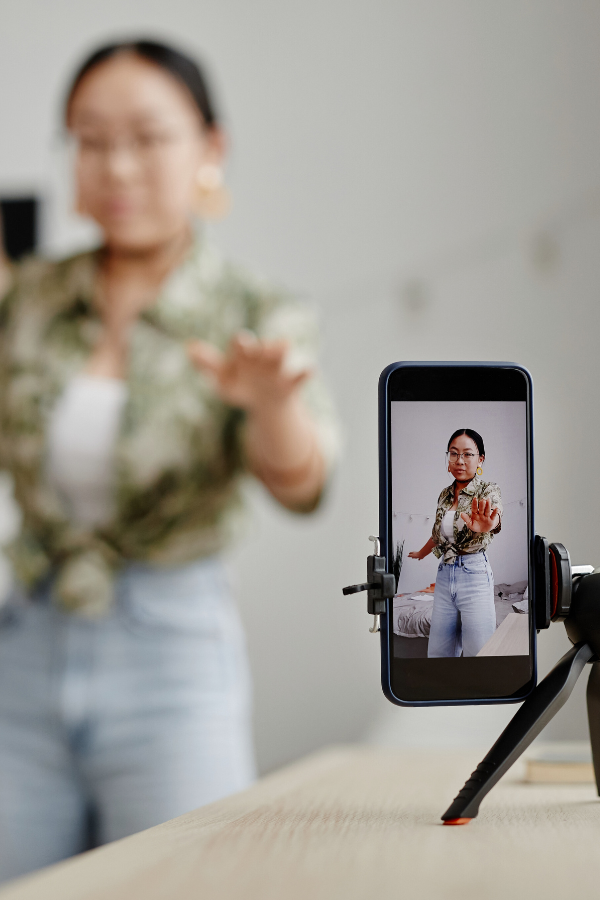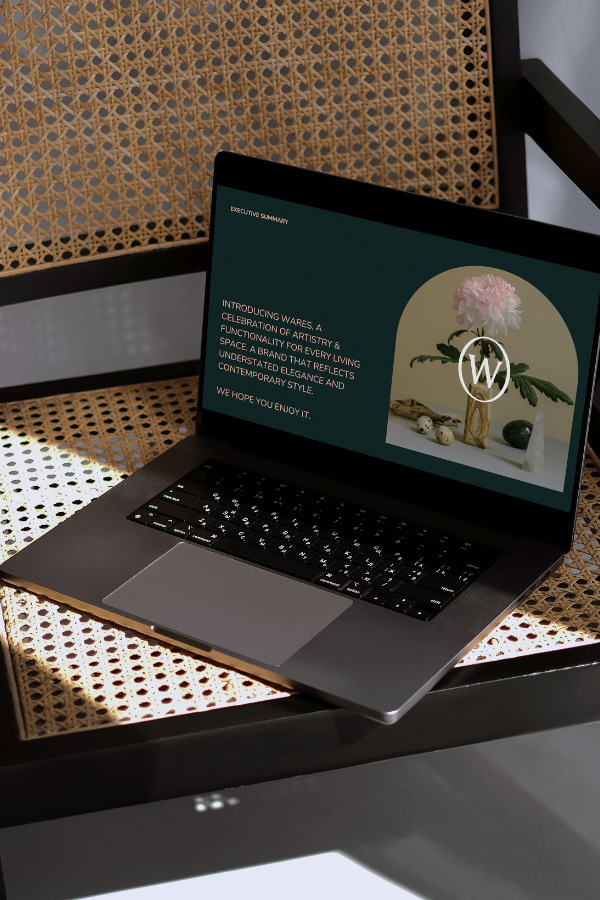
Your Digital Footprint: Why Entrepreneurs Need to Think Beyond Social Media
Summary
Social media is essential for visibility, but it’s unpredictable and temporary. Creative entrepreneurs need to expand their digital footprint beyond social media platforms to build a long-lasting, resilient online presence. By creating a website, launching newsletters, securing press features, and sharing thought leadership, you ensure your work lives on, attracts opportunities, and isn’t left at the mercy of changing algorithms.
Reflection Questions
- If your main social media account disappeared tomorrow, how would potential clients or collaborators find you?
- What steps can you take to expand your active digital footprint beyond social media?
- Does your current website, newsletter, or online presence reflect the professional story you want to tell?
Journal Prompt
Imagine you’re searching for your name or business on several search engines five years from now. What do you want people to see? Describe the positive online presence you’d like to create—your website, press features, collaborations, and more—and list three actionable steps you can take today to start building that vision.
Social media feels like the be-all-end-all for creative entrepreneurs who need visibility online if they want their businesses to flourish. It’s quick, flashy, and gives you instant feedback—what’s not to love? But here’s the question: If Instagram shut down tomorrow, where would your audience go to find you? It’s a painful proposition but an important one to think about. While social media platforms are powerful, they’re also unpredictable and temporary. By expanding your digital footprint beyond social media, you create a more resilient, long-lasting presence—one that showcases your work, builds trust, and ensures your creative legacy isn’t left to the whims of an algorithm.
What Is a Digital Footprint (and Why Should You Care?)
Your digital footprint is the collective trail of data you leave online, intentionally or unintentionally. Think of it as your digital shadow—following you wherever you go on the internet.
For creative entrepreneurs, your digital footprint shapes your online reputation, influences how potential clients and collaborators perceive you, and ultimately determines how easy you are to find when someone searches for your work. Everything can be Googled, so your footprint isn’t just about visibility. You should ensure that your digital footprint helps you be seen in a respectable light and creates a positive online presence for internet users.
Understanding your digital footprint gives you power over how you show up in the digital space. It’s not just about what you share on social media platforms; it’s about every action online that contributes to the larger picture of who you are.
Whether you’re posting on Instagram, submitting online forms, or leaving a comment on a public forum, all of these actions online combine to build an impression of you. As creative women juggling businesses, families, and artistry, managing your digital footprint thoughtfully ensures you stand out in the right ways.
Active Digital Footprints

Your active digital footprint is made up of the information you choose to share online. This includes social media posts, blog entries, newsletters, and professional comments you leave on forums or collaborative platforms.
When you create social media accounts, write a thoughtful caption, or share a polished project update, you’re adding to your active digital footprint. These intentional contributions shape how others see you—your unique voice, expertise, and creativity all leave an impression. For interior designers, novelists, or artists, this could mean showcasing your latest project or sharing reflections on the creative process through an online medium.
However, it’s not just about posting content—it’s about curating it. A thoughtful digital strategy ensures the data trail you leave is aligned with your professional goals and values. By strategically sharing your work and story, you build a positive digital footprint that resonates with your ideal clients or audience.
Are you creating a new user account on Medium to publish articles? Or sharing a process video on Instagram? Each of these steps leaves an intentional mark. The key is to balance creativity with consistency while respecting online privacy and ensuring you’re comfortable with what you share online.
Passive Digital Footprints

Unlike active footprints, passive digital footprints are left behind unintentionally. Every time you browse a website, scroll through mobile apps, or search for something online, you leave passive data trails.
Websites install cookies to track your preferences, and search engines collect information like your IP address and browsing history. Even when you don’t actively post or comment, your passive digital presence still grows. Many users are surprised by how much data left online can reveal about them—sometimes without their consent.
For creative entrepreneurs, being aware of these passive footprints is crucial for cyber security and digital footprint management. Not only can threat actors use this data for phishing attacks or identity theft, but a poorly managed passive presence can also have negative consequences—like sensitive data unintentionally being made public.
Using tools like a virtual private network (VPN) can help prevent websites from collecting excessive information and protect your sensitive information from bad actors. By staying mindful of your online activity, you can reduce unnecessary data exposure and maintain a more secure, manageable footprint.
Fuel your creative fire & be a part of a supportive community that values how you love to live.
subscribe to our newsletter
*please check your Spam folder for the latest DesignDash Magazine issue immediately after subscription

Why Understanding Your Digital Footprint Matters
Understanding your digital footprint gives you control over your online presence and ensures your work is seen in the best possible light. Every action online—whether intentional, like a carefully crafted newsletter, or unintentional, like data left in your browsing history—creates a trail of data.
For creative entrepreneurs, this footprint becomes the foundation of your online reputation. By managing it thoughtfully, you decide what people remember about you: the design firm you built, the gallery you run, or the poetry collection you poured your soul into.
A positive digital footprint can attract clients, collaborators, and opportunities, while an unmanaged one can leave gaps or misrepresent your story.
Your Digital Footprint and the Fragility of Social Media

Social media may seem the cornerstone of your online presence, but its unpredictable nature makes it a risky foundation for your business. Platforms constantly evolve—algorithms change overnight, accounts get hacked, and popular networks can fade into obscurity.
Just think of MySpace and Vine, or the rapid transformation of X (formerly Twitter)—places where many users invested time and creativity, only to lose access or relevance. Creative women, especially those running small businesses, can’t afford to have their reach and reputation tied solely to platforms they can’t control.
What Social Media’s Unpredictable Nature Means for Your Online Presence
Social media platforms are dynamic and often unstable. Algorithms might deprioritize your content, shadow bans can limit visibility, and hacked accounts or glitches can wipe out years of effort. Worse, platforms can simply vanish or lose their influence overnight, taking your hard work with them.
These digital activities are out of your hands, leaving you vulnerable to circumstances beyond your control. While social media posts are essential for engagement, relying solely on them puts your business at risk—clients and collaborators need other reliable ways to find you.
Social Media Is Rented Land
“Building your business solely on social media is like building a house on rented land.” You may create beautiful content and foster a thriving community, but at the end of the day, the platform owns the space.
If your account disappears or your engagement suddenly drops, what’s left? For interior designers, artists, and makers, this fragility is especially risky—potential clients may never see your work again if your user accounts disappear. By diversifying your digital strategy through websites, newsletters, and press features, you create a sustainable presence that’s fully yours.
Top Tip: Audit your reliance on social platforms today. Where’s your backup plan if the algorithms turn on you?
Beyond Social Media: Other Places to Leave Your Mark

Relying solely on social media platforms might feel like the fastest way to gain visibility, but it’s not the most sustainable. Expanding your digital footprint ensures you have a presence in spaces you fully control—places where your work can live on, be discovered, and grow for years to come.
Whether it’s your own website, an engaging newsletter, or guest features on blogs and podcasts, these digital activities provide depth to your online reputation and give potential clients, collaborators, and even search engines a reason to find and trust you.
Your Website (Your Digital Home Base)
Your website is your digital home base—a space you own, where you dictate the rules and aesthetic. Unlike social media accounts, your website isn’t subject to changing algorithms or disappearing overnight. It’s a professional, polished hub where you can showcase your work, boost your visibility through SEO, and present yourself exactly as you want to be seen.
For interior designers, artists, and makers, a website is a portfolio, a story, and a handshake all rolled into one. It’s your opportunity to control what people see, ensuring you leave a strong, positive online presence every time someone searches for your name.
Actionable Tip: Ensure your website includes:
- An easy-to-navigate portfolio that highlights your best work.
- A compelling “About” page that shares who you are and why you do what you do.
- Clear contact information so visitors can reach you without hassle.
Email Newsletters (Where the Magic Happens)

Newsletters are where relationships deepen. Unlike social media posts, which get lost in endless scrolling, a newsletter lands directly in your reader’s inbox, making it personal and intentional. For creative entrepreneurs, a newsletter is an opportunity to connect beyond the curated posts—share behind-the-scenes stories, project updates, or reflections that resonate.
Act like you’re writing to a trusted friend: show your work in progress, offer inspiration, and invite your audience into your creative world. This direct connection builds loyalty and turns your audience into long-term supporters of your work.
Collaborations and Features (Press, Podcasts, Blogs)
Getting featured on blogs, podcasts, or in online publications is an excellent way to boost credibility and expand your audience. These platforms allow you to share your expertise, highlight your creative process, or showcase finished projects, leaving a positive digital footprint that’s both lasting and searchable.
For many creative entrepreneurs, collaboration with others opens doors to new audiences and elevates their work in a respectable light. Whether you’re explaining how you source materials for your pottery or discussing your favorite design principles on a podcast, these features add depth and authority to your digital presence.
How to Start: Pitch your expertise, share a behind-the-scenes process, or tell your story—focus on what makes your work or perspective unique.
Digital Portfolios and Thought Leadership
A digital portfolio or thought leadership content is your chance to position yourself as an expert in your field. Platforms like Medium, LinkedIn, or guest blogging opportunities allow you to share your insights, case studies, or stories in a way that builds trust and authority.
For example, a blog post about an interior design trend or a LinkedIn article about navigating creative burnout shows your expertise while providing value to others. These kinds of contributions not only boost your search results but also solidify your standing as someone who inspires, educates, and leads in their field.
Small, Actionable Steps to Expand Your Digital Footprint
Expanding your digital footprint doesn’t have to feel overwhelming or time-consuming—small, intentional actions can add up to a lasting impact. By thoughtfully assessing your current presence, making strategic updates, and branching out to new platforms, you’ll create a stronger foundation for your work that doesn’t rely on social media alone. The following steps are approachable, practical, and designed for creative entrepreneurs who already have a lot on their plates.
Step 1: Audit Your Current Digital Presence
Start by assessing your active and passive digital footprints to see what’s working and where you need to improve. Review your website, social media accounts, and any press mentions to understand what people find when they search for you.
Are your online reviews accurate? Are there old accounts or incomplete profiles that need updating? Remember to explore your passive digital footprints, such as what appears in your browsing history, search results, and forgotten accounts. By doing this, you can ensure you’re leaving a thoughtful and intentional impression that aligns with your creative goals.
Step 2: Start or Refresh Your Website
Your website is one of the most powerful tools for managing your digital footprint because you own it and control the narrative. If you don’t have a website yet, start simple—a clean design with a portfolio, a compelling “About” page, and clear contact information is more than enough. If you already have a site, refresh it by updating old work, fixing common misspellings, and ensuring all links and pages work smoothly.
Step 3: Launch a Simple Newsletter

Newsletters are one of the most effective ways to build meaningful connections with your audience. Start small with a monthly email—no need to overcomplicate it. Use this space to share behind-the-scenes peeks, project updates, personal musings, or valuable insights into your creative process.
Unlike social media platforms, newsletters aren’t filtered through algorithms, so you control how and when you reach your readers. This consistency helps maintain a positive online presence while building long-term relationships with people who genuinely care about your work.
Step 4: Get Featured on Podcasts, Blogs, or Press
Being featured on blogs, podcasts, or in press articles helps you grow your online reputation and reach new audiences. Think of it as adding more pathways for people to discover your work.
Pitch your expertise to platforms where your voice will resonate—whether it’s sharing design insights on a podcast, writing about your creative process for an industry blog, or collaborating with peers to tell your story. These features also leave a searchable, lasting data trail showcasing your knowledge and creativity to potential clients, collaborators, or employers.
Step 5: Diversify Where You Share Your Work
Relying solely on one or two platforms can be risky, so consider spreading your work across different spaces to ensure a broader reach. Share project updates on LinkedIn, publish thought leadership pieces on Medium, or showcase visuals on Pinterest to draw in fresh audiences.
Writing guest posts or collaborating with other creatives can further amplify your visibility. By diversifying your digital activities, you’re future-proofing your online presence and ensuring your creative voice can be discovered across platforms—no matter how trends shift or platforms evolve.
Final Thoughts: Lasting Impact Over Quick Wins

Social media is a powerful tool for visibility today, but your work, your vision, and your legacy deserve a foundation that will stand the test of time. By understanding and managing your digital footprint, you create a lasting, intentional presence that reflects your creativity, expertise, and unique story.
The goal isn’t to abandon social media but to build beyond it through websites, newsletters, features, and thought leadership that truly showcase who you are. Pick one platform beyond social media to focus on today. Refresh your website, start a simple newsletter, or pitch yourself for a feature—small steps now will create a powerful and lasting impact.
Your creative work deserves to be seen and remembered, not just today, but for years to come.








